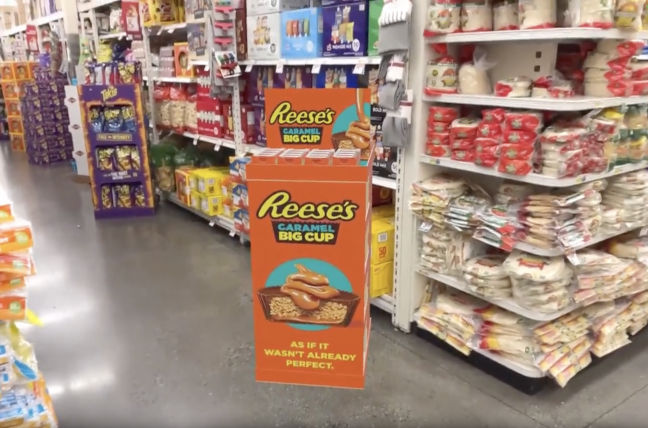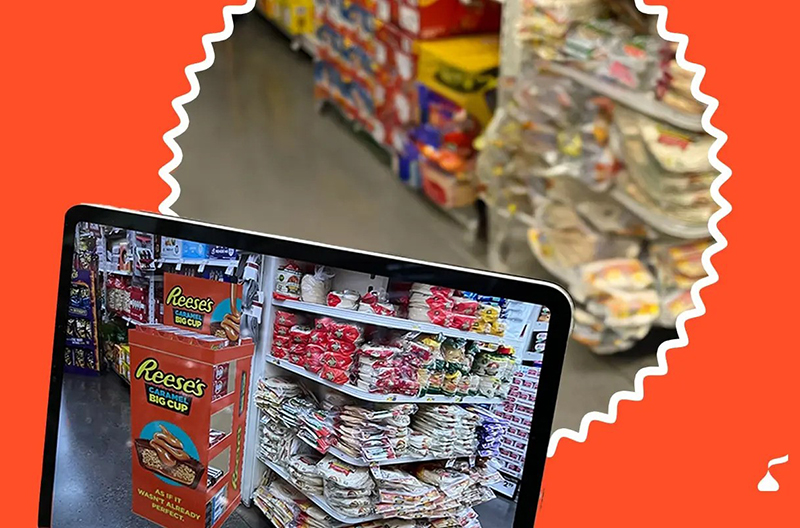The Hershey Co. is “perfecting perfection” with its Reese’s Big Cup, utilizing two new technologies designed to “drive decisions, track performance, collect actionable data and boost sales.”
Momin Bhatti, Hershey’s associate manager of corporate communications, visited with The Shelby Report during the recent Sweets & Snacks Expo in Indianapolis, sharing how the company is using these capabilities to promote its products in-store with retailers.
To coincide with the release of its Reese’s Caramel Big Cup – “the No. 1 innovation in the category,” according to Bhatti – Hershey’s retail sales team uses augmented reality and image recognition to help retailers make data-driven decisions to optimize merchandise placement and increase sales.
Augmented reality
Using the Reese’s Caramel Big Cup as an example, Hershey employees can work on the store floor with supermarket associates to generate an image on their tablets of what the product would look like in a particular spot.
Having this image would allow them to make immediate decisions for a location anywhere in the store.
“They can actually use augmented reality to show that item,” Bhatti said. “Instead of the retailer needing to imagine what it would look like, they can see it right then and there. If [a retailer is] interested … they can go ahead and order products right there.”
With augmented reality, a retailer can visualize size, color scheme and how it complements or clashes with nearby items. On a larger scale, retailers can also virtually stock shelves to see how different layouts and configurations could impact product visibility and customer flow.
[RELATED: Hershey Shares Insights On Front-End Queuing, Self-Checkout]

Image recognition
Image recognition also plays a major role in the successful execution of increasing sales, helping to identify the piece of merchandise and the location of the in-store display, tracking sales in real time.
The image recognition aspect occurs after the product has been placed, “where we can track how successful the item is in that location to provide data-driven insights to our retailers for successful execution,” Bhatti said.
“We can take pictures, and then we can see how much product is on there still, how product is moving off of that unit – even things like the angle that it should be, the location along the aisle, especially when every store has different sized aisles – it’s a really great way to enhance that conversation.”
In addition, the software can detect misplaced items or a product that is out of stock earlier, allowing for quicker remedies to promote more sales.
The Hershey Co. has undertaken extensive research to determine that this technology is useful in every aisle of the supermarket.
“We have insights on interrupting the aisle, so you have to walk around it and it catches your attention. And we have other merchandising strategies [that address] where the product should be on the shelf in regards to line of sight to make sure that consumers are seeing them,” Bhatti continued.
Recognizing that consumers have different “shopping missions” at the grocery store, Hershey thinks the use of this technology will encourage impulse buys of several of its new products this year.
Used together, augmented reality and image recognition technology also can help the company boost sales, lessen the potential for human error and free up employees to focus on other priorities.

